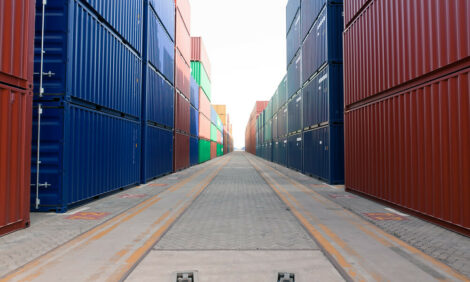



China: New Export Potential for Canadian Pork ?
CANADA - Canadian pork producers are looking to China in the hope of developing new markets for their product while helping to ease a shortage of pork in that nation.
China is by far the world’s largest producer of pork, accounting for approximately half of the world’s total pork output. However China also accounts for about half of the world’s total pork consumption and the demand for pork continues to rise as Chinese consumers gain affluence.
CPC executive director Martin Rice explains it was a mission to find out what would give rise to China becoming a larger importer of pork cuts from Canada and other countries and the possibility of China becoming a greater competitor in the world pork market.
“We learned a lot about what influences the Chinese market, what opportunities are there, their desire to move forward and to feed their own people,” recalls CPC president Clare Schlegel.
He observes the Canadian and Chinese markets are vastly different.
“Their taste preferences are different than ours. They tend to use the entire pig. Their pig production system is also quite different that ours. It’s still concentrated in backyards — producers with between one and ten pigs.”
“Keeping in mind that China produces roughly 50 percent of all the hogs in the world, that means three hogs out of ten in all of the world are produced in the back yards of China.”
Saskatchewan Pork Development Board (Sask Pork) producer services manager Harvey Wagner observes they have a growing element of larger farms with 400 and up to fifteen-hundred sow farrow to finish operations. They are also developing a number of farrowing units to supply feeder pigs out into the country.
Wagner, who was in China last month as part of a Canada-China Agriculture Development Program project intended to improve hog production and food safety in China, says, “Mostly the idea is to improve productivity and to improve the genetic background of the pigs.”
Rice adds that China’s pork industry has also been hurt by the increased feed costs that have been seen worldwide over the last year. Additionally, they have had to manage a rapid outbreak of PRRS (Porcine Reproductive and Respiratory Syndrome) which claimed up to 20 percent of the Chinese pig population and resulted in pork prices that are roughly double those of one year ago.
Claude Vielfaure of La Broquerie, Manitoba-based Hytek Limited and a director with Manitoba Pork Council observes, “The amount of pork that is eaten in China is fairly amazing. Of the total meat consumption in China per capita, 65 percent of it is pork. And right now there’s a shortage of meat in China so there’s a big push to be able to get more meat in order to feed the people.”
Possberg estimates that in the next ten years China will consume an extra 130 million hogs per year. He doubts whether they can produce that much more pork in an already concentrated industry in China. “That’s obviously a great opportunity for the rest of the world and we believe Canada can be a significant part of supplying that extra pork meat to Chinese consumers.”
He observes, “Chinese consumers are gaining in affluence and we could see it everywhere. There is construction everywhere. They’re building roads, factories and apartments and their rural economy is evolving as they become an industrial giant for all sectors of our industrial world. These people are going to consume more meat and pork is by far the largest segment of the meat industry in China.”
“The short term would suggest there’s a good likelihood of some additional imports and not just imports of the usual product we sell to China which are organ meats such as kidneys and stomachs etcetera. They are looking at bringing in cuts of pork to supplement their domestic supply.”
Rice acknowledges China is expected to get its domestic production back up again. “We are not so convinced there will be a large import demand for pork to China after this period of high pork prices is overcome. But, looking at it in the longer run, we would definitely see opportunities for China, say five to ten years from now, to start becoming a more regular and larger pork importer.”
“They are our fourth or fifth largest market at this point time and we certainly would like to increase that depending on their particular situation and demand."
CPC Fact Finding Mission Travels to China
Last month a delegation of Canadian pork producers traveled to China as part of a Canadian Pork Council (CPC) fact finding mission, to take part in the World Pork Congress in Nanjing and to learn more about the Chinese market.CPC executive director Martin Rice explains it was a mission to find out what would give rise to China becoming a larger importer of pork cuts from Canada and other countries and the possibility of China becoming a greater competitor in the world pork market.
“We learned a lot about what influences the Chinese market, what opportunities are there, their desire to move forward and to feed their own people,” recalls CPC president Clare Schlegel.
He observes the Canadian and Chinese markets are vastly different.
“Their taste preferences are different than ours. They tend to use the entire pig. Their pig production system is also quite different that ours. It’s still concentrated in backyards — producers with between one and ten pigs.”
Small Farms Account for Bulk of Chinese Pork Output
Florian Possberg, President and CEO of Humbolt, Saskatchewan-based Big Sky Farms and a CPC delegate, points out farms with one or two and, in most cases, less than ten hogs per farm per year account for roughly 60 percent of total pork output.“Keeping in mind that China produces roughly 50 percent of all the hogs in the world, that means three hogs out of ten in all of the world are produced in the back yards of China.”
Chinese Government Seeks to Increase Scale of Production
The Chinese government is encouraging the industrialization of its agricultural base and larger scale production.Saskatchewan Pork Development Board (Sask Pork) producer services manager Harvey Wagner observes they have a growing element of larger farms with 400 and up to fifteen-hundred sow farrow to finish operations. They are also developing a number of farrowing units to supply feeder pigs out into the country.
Wagner, who was in China last month as part of a Canada-China Agriculture Development Program project intended to improve hog production and food safety in China, says, “Mostly the idea is to improve productivity and to improve the genetic background of the pigs.”
Ability to Expand Hampered by Combination of Challenges
However, as China works to expand its pork production to meet a growing domestic demand for pork the industry faces a number of challenges. Wagner observes one of the challenges is the genetic background of the local pigs. “While fairly tasty they don’t grow as fast and their lean yield isn’t very high so they’re trying to improve them with the leaner genotypes.”Rice adds that China’s pork industry has also been hurt by the increased feed costs that have been seen worldwide over the last year. Additionally, they have had to manage a rapid outbreak of PRRS (Porcine Reproductive and Respiratory Syndrome) which claimed up to 20 percent of the Chinese pig population and resulted in pork prices that are roughly double those of one year ago.
Pork a Key Component of Chinese Food Basket
Schlegel points out, “In China, pork is 15 percent of their food basket. It’s very, very important. It’s one of nine different items that they actually look at as supporting national security so they are very concerned right now as pig prices and pork prices are relatively high for their consumers.”Claude Vielfaure of La Broquerie, Manitoba-based Hytek Limited and a director with Manitoba Pork Council observes, “The amount of pork that is eaten in China is fairly amazing. Of the total meat consumption in China per capita, 65 percent of it is pork. And right now there’s a shortage of meat in China so there’s a big push to be able to get more meat in order to feed the people.”
China Targets Increased Meat Consumption
Schlegel notes the Chinese government is hoping to increase consumption of meat by its citizens by 30 grams a day and, if successful, that will obviously create tremendous demand for pork, for chicken and for other meats.Possberg estimates that in the next ten years China will consume an extra 130 million hogs per year. He doubts whether they can produce that much more pork in an already concentrated industry in China. “That’s obviously a great opportunity for the rest of the world and we believe Canada can be a significant part of supplying that extra pork meat to Chinese consumers.”
He observes, “Chinese consumers are gaining in affluence and we could see it everywhere. There is construction everywhere. They’re building roads, factories and apartments and their rural economy is evolving as they become an industrial giant for all sectors of our industrial world. These people are going to consume more meat and pork is by far the largest segment of the meat industry in China.”
Short Term Opportunities Appealing
According to Rice some imports have already started to be contracted for. Although there has been no confirmation, some estimates indicate China will require as much as 400 thousand tonnes of pork within the next year or so.“The short term would suggest there’s a good likelihood of some additional imports and not just imports of the usual product we sell to China which are organ meats such as kidneys and stomachs etcetera. They are looking at bringing in cuts of pork to supplement their domestic supply.”
Rice acknowledges China is expected to get its domestic production back up again. “We are not so convinced there will be a large import demand for pork to China after this period of high pork prices is overcome. But, looking at it in the longer run, we would definitely see opportunities for China, say five to ten years from now, to start becoming a more regular and larger pork importer.”
China Committed to Meeting Domestic Pork Demand
Schlegel concedes, “China is committed to feeding its own people so it may never be an extremely large market. But there is still a significant opportunity there, particularly for some of the cuts and some of the parts of the pig that we do not eat in Canada and North America, and there is a growing opportunity in the high end to for muscle cuts particularly in the bigger cities.”“They are our fourth or fifth largest market at this point time and we certainly would like to increase that depending on their particular situation and demand."








